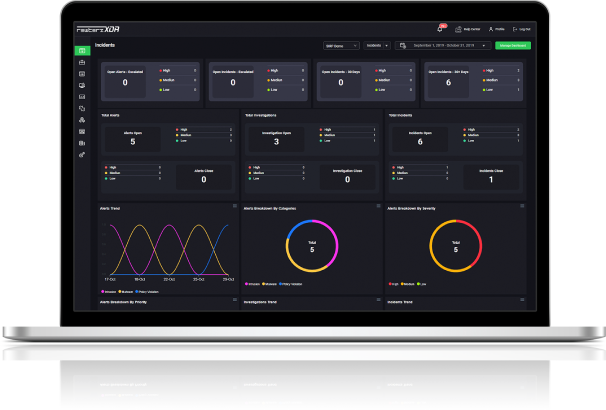

Hackers Abuse PUP Ads to Spread Windows Malware – Active IOCs
August 25, 2025
Critical Chrome Use-After-Free Bug Enables Code Execution
August 27, 2025
Hackers Abuse PUP Ads to Spread Windows Malware – Active IOCs
August 25, 2025
Critical Chrome Use-After-Free Bug Enables Code Execution
August 27, 2025Severity
High
Analysis Summary
Researchers recently identified a cyber campaign in which unknown threat actors impersonated the Oman Ministry of Foreign Affairs to target multiple Ministries of Foreign Affairs. The operation leveraged lures referencing the Iran–Israel conflict and discussions about the Middle East’s “day after,” exploiting ongoing geopolitical tensions to increase the credibility of the malicious emails. By using such sensitive and timely political themes, the attackers sought to trick high-value diplomatic recipients into engaging with the content, thereby advancing their objectives.
Analysis of the campaign revealed that the techniques used closely mirror obfuscation methods observed in 2023, when Iranian-linked groups targeted the Mojahedin-e-Khalq organization in Albania. Specifically, the attackers employed similar deceptive strategies to conceal malicious content and evade detection, pointing to a continuity in tradecraft. These overlaps in both thematic lures and technical methods suggest a link between the newly observed activity and previously attributed Iranian operations.

While attribution remains uncertain, researchers assess with moderate confidence that the same Iranian-aligned actors are behind this campaign. The operation highlights Iran’s persistent reliance on cyber-enabled espionage and influence tactics to pursue strategic geopolitical goals, particularly by targeting foreign ministries and other high-level political entities.
Impact
- Credential Theft
- Unauthorized Access
- Reputational Damage
Indicators of Compromise
Domain Name
screenai.online
MD5
- 3ab16bd1c339fd0727be650104b74dd1
- fd75770a2ef293fe0c2ffe1c46cbd904
- 7a725ed8e770d9c5d32813a85b903bab
- e2a5019f85a8aed140b13c87cf9a791a
- 7e73ca410dc6480c77a9236c0733c0a1
- e73ba93d008affdc4cce0cb4e18ae5c6
- d6ad04612f9a6060f3955c43ad5cf236
- 3bb65d389d5c535f068328e607d2d688
- 78b778ba0bcd546337077a50b8f90532
- 1de19958e7c2ef14addfb35b43a594ec
- a408e056425307096dbf3e8b50a0b673
- 1a86ed697e24731b88e5e591c6ecfb91
SHA-256
- b2c52fde1301a3624a9ceb995f2de4112d57fcbc6a4695799aec15af4fa0a122
- 05d8f686dcbb6078f91f49af779e4572ba1646a9c5629a1525e8499ab481dbf2
- 03828aebefde47bca0fcf0684ecae18aedde035c85f9d39edd2b7a147a1146fa
- 02ccc4271362b92a59e6851ac6d5d2c07182064a602906d7166fe2867cc662a5
- 76fa8dca768b64aefedd85f7d0a33c2693b94bdb55f40ced7830561e48e39c75
- 2c92c7bf2d6574f9240032ec6adee738edddc2ba8d3207eb102eddf4ab963db0
- 80e9105233f9d93df753a43291c2ab1a010375357db9327f9fe40d184f078c6b
- f0ba41ce46e566f83db1ba3fc762fd9b394d12a01a9cef4ac279135e4c1c67a9
- 3d6f69cc0330b302ddf4701bbc956b8fca683d1c1b3146768dcbce4a1a3932ca
- 1c16b271c0c4e277eb3d1a7795d4746ce80152f04827a4f3c5798aaf4d51f6a1
- 1883db6de22d98ed00f8719b11de5bf1d02fc206b89fedd6dd0df0e8d40c4c56
- 3ac8283916547c50501eed8e7c3a77f0ae8b009c7b72275be8726a5b6ae255e3
SHA1
- 2b5ddc48fe17d014e38b9fd6646b23d5eb70b471
- d4378b67c2827ee4def62fd3e8a98f4a0d950298
- 8a7cf41375dae8561f5946f64e0b08d1ef007ed5
- cb0d1f3ea8230c1d46eff18ac846546786776782
- 29f86bc6921b56ea178c8f2b06f136b3b1fc80a6
- f07a8014f36181e88d273d07b7a5503417f799a3
- 33591832d096223b4c44ac56e7894ec038a9ebf7
- 290ab496ab0a66e16f0558d621a52cacd5c66392
- f326bb96544e1b0c9df9bdc496c417dcf5760067
- ec251c5b831be6265d8daeb0437229b8b00e0b68
- 4f69ab8e1f90ad087a4a74397ff8cd0748e85be8
- ff3fe0c43949a9011f8fd4eab8bddce6c1287bdb
Remediation
- Implement multi-factor authentication to reduce the risk of credential theft.
- Regularly update and patch systems to close vulnerabilities exploited by attackers.
- Conduct phishing awareness training so staff can identify and report suspicious emails.
- Deploy advanced email filtering to detect and block malicious attachments or links.
- Monitor network traffic for unusual activity that could indicate compromise.
- Use endpoint detection and response tools to identify and contain threats quickly.
- Enforce least privilege access to limit the impact of compromised accounts.
- Establish incident response playbooks to ensure rapid containment and recovery.
- Perform regular threat intelligence integration to stay updated on attacker tactics.
- Carry out security audits and penetration testing to identify and fix weaknesses.








